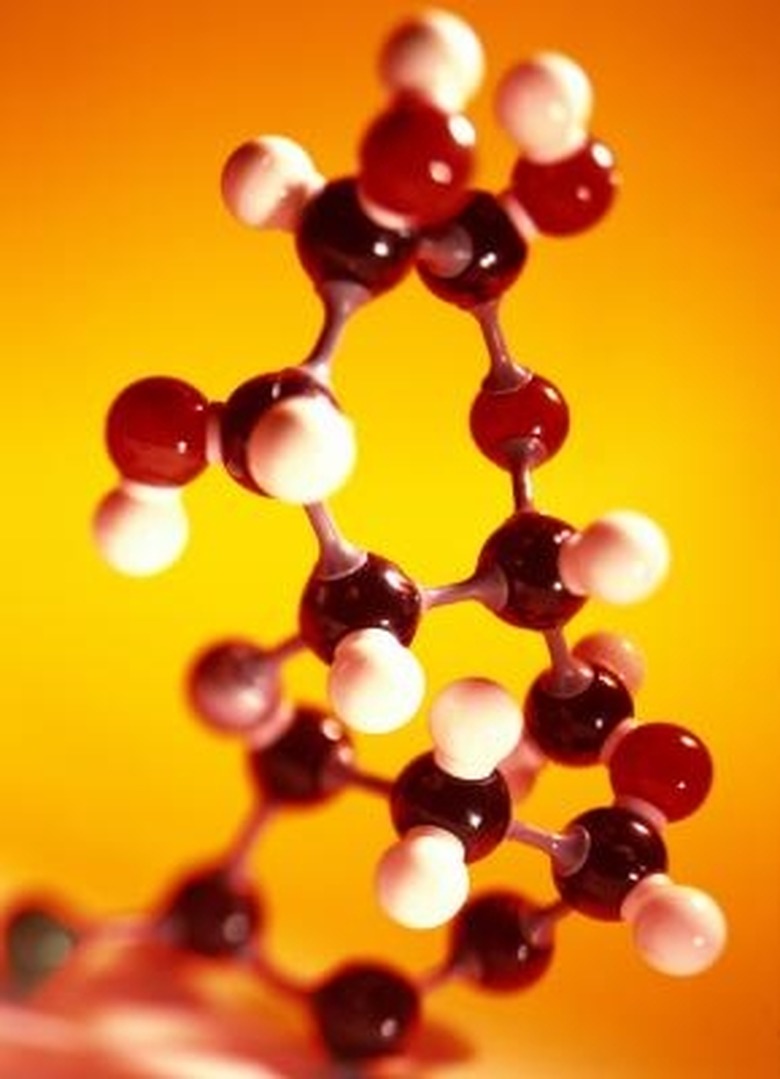How To Measure Solubility For A Science Project
Solubility refers to highest amount of a dissolvable substance, also known as a solute, that can actually be dissolved in a given dissolving substance, also known as a solvent. In terms of science experiments, you can determine the solubility of given household items, such as table salt, Epsom salt and sugar, by testing it yourself at home. All you need is solutes, water and a scale to begin dissolving and measuring these ingredients.
Method One
Step 1
Add 100 ml of water to a clean beaker. The water should be distilled for best results. If you do not have a beaker, you can use a clean glass jar.
Step 2
Use an electric kitchen scale to measure out 50 grams of table salt, 50 grams of Epsom salt, and 250 grams of sugar. The table salt should be non-iodized.
Step 3
Add a small amount of the salt to the water and stir it with a clean, plastic spoon. Stir the mixture continuously until the salt is dissolved. Continue to add small amounts of the salt to the water and stir it until it dissolves.
Step 4
Measure the remaining salt once it will no longer dissolve. Record the results.
Step 5
Repeat the previous two steps for the Epsom salt and the sugar in separate beakers of 100 ml distilled water each.
Step 6
Calculate the solubility of each solution by subtracting the ingredient you did not mix into the water from the sum of the water volume and the amount of the ingredient you added.
Step 7
Save all three solutions for the second method.
Method Two
Step 1
Use a piece of tape and a marker to label the bottom of three small, shallow plates. The labels should read table salt, Epsom salt, and sugar and the plates should be ovenproof. Weigh the empty plates on your electric kitchen scale and record the results. Do this with all three plates even if they are the same style. There may be a slight variance in weights.
Step 2
Pour 15 ml of each solution from the first method into the plate with the corresponding label. Weigh each plate again and record the new weight.
Step 3
Place all three saucers in a preheated oven set at 250 degrees Fahrenheit. Leave them in there until the water evaporates, which will vary based on your altitude and the air conditions that day.
Step 4
Use oven mitts to remove the plates from the oven. Be careful since they will be very hot. Weigh the plates again on the kitchen scale after all the water has evaporated. Record your results.
Step 5
Calculate the mass of the evaporated water by subtracting the mass of solution after evaporation from the mass before evaporation.
Things Needed
- Water
- Beaker
- Kitchen scale
- Salt
- Epsom salt
- Sugar
- Plastic spoon
- Tape
- Marker
- Plates
- Oven
TL;DR (Too Long; Didn't Read)
You should repeat both methods at least three times for each solution to ensure you have accurate results.
References
Cite This Article
MLA
Ringwald, Erin. "How To Measure Solubility For A Science Project" sciencing.com, https://www.sciencing.com/measure-solubility-science-project-5711733/. 24 April 2017.
APA
Ringwald, Erin. (2017, April 24). How To Measure Solubility For A Science Project. sciencing.com. Retrieved from https://www.sciencing.com/measure-solubility-science-project-5711733/
Chicago
Ringwald, Erin. How To Measure Solubility For A Science Project last modified August 30, 2022. https://www.sciencing.com/measure-solubility-science-project-5711733/
